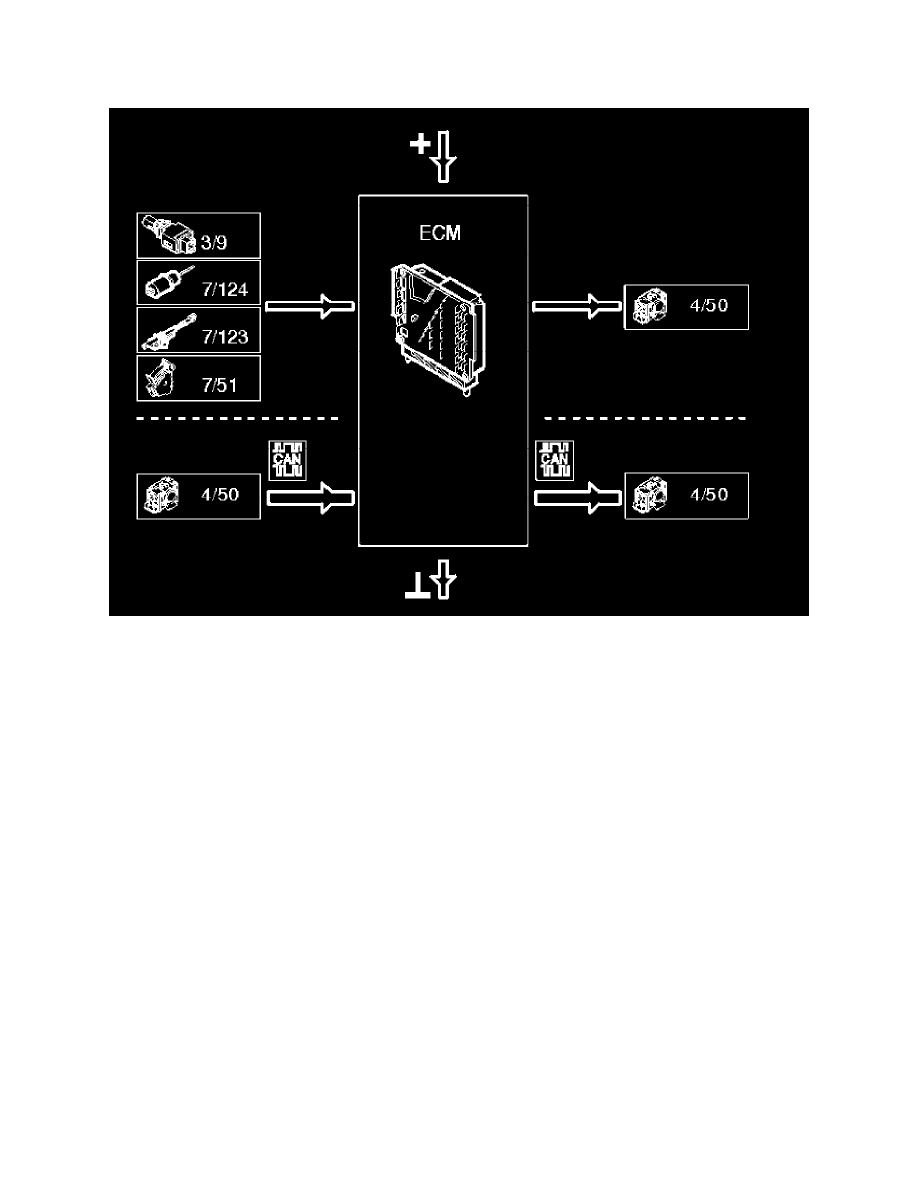V70 2.4 L5-2.4L VIN 61 B5244S (2001)

Electronic Throttle Control Module: Description and Operation
Electronically Controlled Throttle System
In addition to the engine control module (ECM), the electronically controlled throttle system consists of an electronic throttle module (ETM) and an
accelerator pedal (AP) position sensor. The system does not have a mechanical link system or mechanical cable.
The accelerator pedal (AP) position sensor generates two output signals: An analog signal which is approximately 0.5 V when idling and
approximately 4.5 V at wide open throttle (WOT). There is also a pulse width modulated digital signal.
The engine control module (ECM) uses the input signal from the accelerator pedal (AP) position sensor to calculate the requested position of the throttle.
The calculated signal, which corresponds to the requested air flow, is transmitted to the electronic throttle module (ETM) on the high-speed side of the
Controller area network (CAN). The electronic throttle module (ETM) receives the signal and deploys the shutter in the module to the requested
position. The electronic throttle module (ETM) transmits a signal (which corresponds to the actual position of the throttle) on the high speed side of the
controller area network (CAN) back to the engine control module (ECM) to confirm that the electronic throttle module (ETM) has opened the throttle as
requested.
Both the engine control module (ECM) and electronic throttle module (ETM) contain a micro-processor which controls the throttle based on requests
from the engine control module (ECM). The micro-processors also diagnose and monitor their own and each other's function. When there is a fault, the
micro-processors transmit a message to the driver information module (DIM) via the Controller area network (CAN) requesting that the emissions
warning lamp lights.
The electronic throttle module (ETM) consists of a damper motor and a throttle disc amongst other components. The throttle disc is mechanically
connected to two potentiometers, which are mounted at each end of the throttle spindle.
The damper motor is supplied with 12 V and both potentiometers with 5 V.
For safety reasons, two potentiometers transmit the same signal about the position of the throttle to the electronic throttle module (ETM).
If the signal from one of the potentiometers is missing or faulty, the electronic throttle module (ETM) is still able to calculate the position of the throttle
using the signal from the other potentiometer. This maintains the drivability of the car. However the throttle system will be in Limp-home mode and may
react differently than normal.
At closed throttle position (CTP) the signal is approximately 0.1 V and at wide open throttle (WOT) it is approximately 4.8 V.
